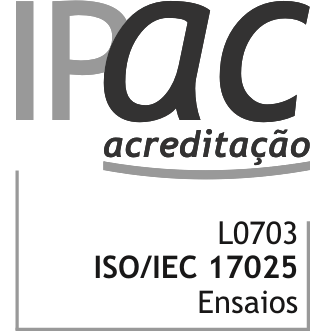Thermal analysis (TG-DSC/DTA)
What is it?
Differential thermal analysis (DTA) is a technique in which the temperature difference between a substance and a reference material is measured as a function of temperature while the substance and reference material (thermally inert substance which exhibits no phase change over the temperature range of the experiment) are subjected to a controlled programme and atmosphere (this can be inert, vacuum, oxidising or reduction).
A DTA curve plots the temperature difference as a function of temperature (scanning mode) or time (isothermal mode), which records the energy events developed during the temperature change process imposed on the sample. These phenomena are generally indicated by peaks that can be in opposite directions if they represent the occurrence of endothermic (heat absorbing) or exothermic (heat releasing) phenomena.
Differential scanning calorimetry (DSC) is a variant of the DTA technique which directly measures the amount of heat energy (heat flux) exchanged between the sample and the environment compared to a reference material and associated transitions in materials as a function of temperature variation. In addition to being a more sensitive technique with greater precision, DSC allows for the determination of parameters that are not possible to obtain through DTA.
By using a high precision scale, Thermogravimetry (TG) measures the mass of a substance as a function of the temperature while it is subjected to a controlled temperature programme. The record on the thermogravimetric, or TG, curve is the mass plotted against the temperature (T) or time (t) if the variation of temperature with time can also be indicated on the same graph.
These variations of mass are the consequence of chemical and structural modifications of materials. The resulting thermogram curve provides information to identify phases or for the study of reaction processes (e.g. oxidation, reduction, decomposition, volatilisation, sublimation and other reactions with the surrounding environment).
The simultaneous thermal analysis (TG-DTA/DSC) is a combined system in which the various types of analysis mentioned above can be performed simultaneously, using a single sample under the same experimental conditions, enabling the variations in mass, enthalpy and temperature to be recorded. This combination makes it possible, for example, to recognise whether a change of energy is associated with a mass change or if it is due to a phase change.
What is it used for?
When subjected to temperature variations, a material can undergo several transformations that can change important variations of some of their physicochemical properties. These changes are particularly important in the vicinity of the transition or state change temperatures and are characteristic of the structure and chemical composition of each material. As such, the observation of these effects through thermal analysis can provide valuable information not only about the nature and intensity of the undergone transformations, but also on the thermal stability and the chemical composition or structural constitution of this material.
Given the great versatility of the techniques mentioned, these may be used in phases of research and development to characterise a wide range of materials (organic and inorganic), including ceramics, metals and alloys, fibers, polymers, composites, pastes, gels, and liquids etc. in several scientific fields and industries (pharmaceutical, food, metallurgical, chemical, electronics, building materials, etc.).
These methods can be used in a wide range of materials to evaluate thermal processes and characterise them qualitatively as endothermic or exothermic, reversible or irreversible transitions of first or second order. Properties such as melting temperatures, crystallisation and glass transition can be determined and other valuable information such as specific heat, enthalpy, degree of crystallinity, oxidation resistance and aspects such as resistance to degradation, presence of impurities and additives, determination of the filler content, etc. can be provided.
Equipment and working conditions
The Setaram equipment used to perform these thermal analysis tests is a Setsys Evolution 1750 model, allowed to operate in temperature range from room temperature to 1600ºC in different atmospheres and temperature rates. DSC / TG tests can be performed simultaneously or separately, depending on the desired results and using sample sizes of 1-200 mg. The basic equipment can also be coupled with a mass spectrometer which makes possible to obtain information on the type of chemical species that are released during the thermal process to which the material is subjected.
Example of use
- Determination of characteristic temperatures (melting, crystallization, polymorphic transitions, reactions glass transition);
- Kinetic evaluation and enthalpy of reactions ;
- Evaluation of temperatures and degrees of oxidation in thin films ;
- Assessment of ceramic raw materials;
- Determination of carbonates in plaster ;
- Thermal and oxidative stability of oils ;
- Determination of the degree of crystallinity ;
- Quantification of additives in polymers;






